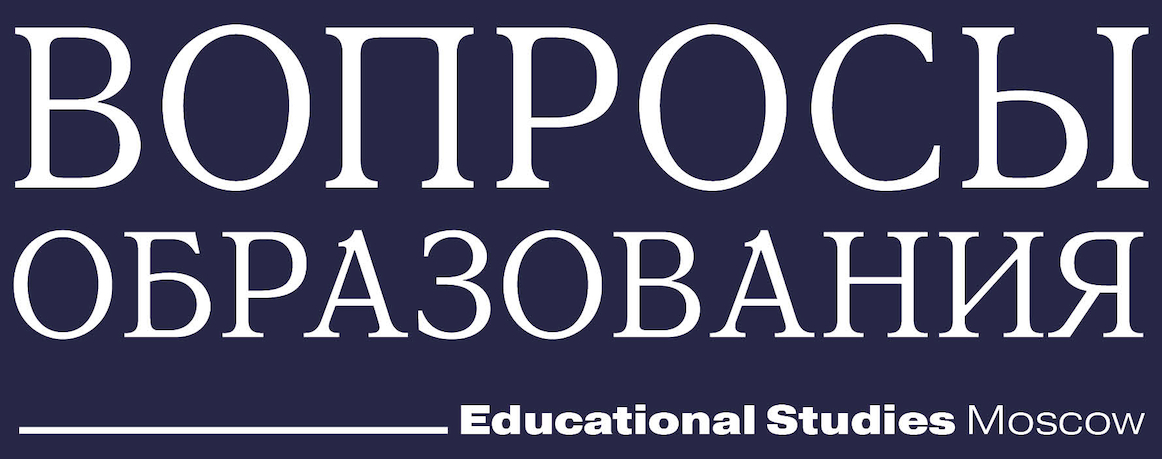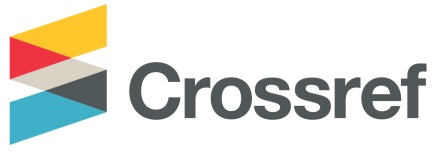Факторы, способствующие и препятствующие удержанию женщин в STEM-областях с углубленным изучением математики: опыт студенток бакалавриата из Казахстана
Аннотация
Несмотря на рост в Казахстане доли женщин среди выпускников вузов, получивших STEM-специальности, в STEM-областях с углубленным изучением математики, таких как инженерия, геология, математика, информатика и физика, женщины по-прежнему представлены очень мало. Увеличение числа женщин, успешно завершающих обучение и работающих в STEM-областях, представляет собой критически важную задачу как для экономики, так и для развития казахстанского общества.
С целью выявления факторов, которые приводят к недостаточной представленности женщин как среди студентов, обучающихся на STEM-специальностях, так и на рынке труда, проведены 29 полуструктурированных интервью со студентками бакалавриата, обучающимися в университетах Казахстана на STEM-специальностях с углубленным изучением математики. Идентифицирован ряд личностных, дистальных и проксимальных факторов, которые могут оказывать существенное влияние на удержание женщин на STEM-специальностях с углубленным изучением математики. Это, в частности, институциональные факторы: школьный опыт, связанный со STEM-дисциплинами, гендерная среда университетов, наличие женщин в преподавательском составе, отношение со стороны мужчин-однокурсников и распределение ролей в групповых заданиях. Представлены рекомендации, направленные на удержание женщин в сфере STEM.
Скачивания
Литература
Almukhambetova A., Kuzhabekova A. (2021) Negotiating Conflicting Discourses: Female Students’ Experiences in STEM Majors in an International University in Central Asia. International Journal of Science Education, vol. 43, no 4, pp. 570–593. https://doi.org/10.1080/09500693.2021.1875150
Almukhambetova A., Kuzhabekova A. (2020) Factors Affecting the Decision of Female Students to Enrol in Undergraduate Science, Technology, Engineering and Mathematics Majors in Kazakhstan. International Journal of Science Education, vol. 42, no 6, pp. 934–954. https://doi.org/10.1080/09500693.2020.1742948
Almukhambetova A., Kuzhabekova A., Hernández-Torrano D. (2023) Hidden Bias, Low Expectations, and Social Stereotypes: Understanding Female Students’ Retention in Math-Intensive STEM Fields. International Journal of Science and Mathematics Education, vol. 21, no 2, pp. 535–557. https://doi.org/10.1007/s10763-022-10256-8
Aschbacher P., Li E., Roth E. (2010) Is Science Me? High School Students’ Identities, Participation and Aspirations in Science, Engineering, and Medicine. Journal of Research in Science Teaching, vol. 47, no 5, pp. 564–582. https://doi.org/10.1002/tea.20353
Astin H., Sax L. (1996) Developing Scientific Talent in Undergraduate Women. The Equity Equation: Fostering the Advancement of Women in the Sciences, Mathematics, and Engineering (eds C.S. Davis, A. Ginorio, C. Hollenshead, B. Lazarus, P. Rayman), San Francisco, CA: Jossey-Bass, pp. 96–121.
Bandura A. (1986) Social Foundations of Thought and Action: A Social Cognitive Theory. Englewood Cliffs, NJ: Prentice Hall.
Bandura A. (1977) Self-Efficacy: Toward a Unifying Theory of Behavioral Change. Psychological Review, vol. 84, no 2, pp. 191–215. https://doi.org/10.1037//0033-295x.84.2.191
Beddoes K., Panther G. (2018) Gender and Teamwork: An Analysis of Professors’ Perspectives and Practices. European Journal of Engineering Education, vol. 43, no 3, pp. 330–343. https://doi.org/10.1080/03043797.2017.1367759
Binder J.F., Baguley T., Crook C., Miller F. (2015) The Academic Value of Internships: Benefits across Disciplines and Student Backgrounds. Contemporary Educational Psychology, vol. 41, April, pp. 73–82. https://doi.org/10.1016/j.cedpsych.2014.12.001
Blickenstaff C.J. (2005) Women and Science Careers: Leaky Pipeline or Gender Filter? Gender and Education, vol. 17, no 4, pp. 369–386. https://doi.org/10.1080/09540250500145072
Buffington C., Cerf B., Jones C., Weinberg B.A. (2016) STEM Training and Early Career Outcomes of Female and Male Graduate Students: Evidence from UMETRICS Data Linked to the 2010 Census. American Economic Review, vol. 106, no 5, pp. 333–338. https://doi.org/10.1257/aer.p20161124
Ceci S.J. (2018) Women in Academic Science: Experimental Findings from Hiring Studies. Educational Psychologist, vol. 53, no 1, pp. 22–41. https://doi.org/10.1080/00461520.2017.1396462
Ceci S.J., Williams W.M. (2011) Understanding Current Causes of Women’s Underrepresentation in Science. Proceedings of the National Academy of Sciences of the United States of America, vol. 108, no 8, pp. 3157–3162. https://doi.org/10.1073/pnas.1014871108
Codiroli Mcmaster N. (2017) Who Studies STEM Subjects at A Level and Degree in England? An Investigation into the Intersections between Students’ Family Background, Gender and Ethnicity in Determining Choice. British Educational Research Journal, vol. 43, no 3, pp. 528–553. https://doi.org/10.1002/berj.3270
CohenMiller A., Saniyazova A., Sandygulova A., Izekenova Z. (2021) Gender Equity in STEM Higher Education in Kazakhstan. Gender Equity in STEM in Higher Education: International Perspectives on Policy, Institutional Culture, and Individual Choice (eds H.K. Ro, F. Fernandez, E.J. Ramon), New York, NY: Routledge, pp. 140–157. https://doi.org/10.4324/9781003053217
Convertino C. (2020) Nuancing the Discourse of Underrepresentation: A Feminist Post-Structural Analysis of Gender Inequality in Computer Science Education in the US. Gender and Education, vol. 32, no 5, pp. 594–607. https://doi.org/10.1080/09540253.2019.1632417
Creswell J. (2013) Qualitative Inquiry and Research Design: Choosing among Five Traditions. Thousand Oaks, CA: Sage.
Creswell J. (1998) Qualitative Inquiry and Research Design: Choosing among Five Traditions. Thousand Oaks, CA: Sage.
Deemer E.D., Thoman D.B., Chase J.P., Smith J.L. (2014) Feeling the Threat: Stereotype Threat as a Conceptual Barrier to Women’s Science Career Choice Intentions. Journal of Career Development, vol. 41, no 2, pp. 141–158. https://doi.org/10.1177/0894845313483003
Drury B.J., Siy J.O., Cheryan S. (2011) When Do Female Role Models Benefit Women? The Importance of Differentiating Recruitment from Retention in STEM. Psychological Inquiry, vol. 22, no 4, pp. 265–269. https://doi.org/10.1080/1047840x.2011.620935
Durrani N., CohenMiller A., Kataeva Z., Bekzhanova Z., Seitkhadyrova A., Badanova A. (2022) The Fearful Khan and the Delightful Beauties: The Construction of Gender in Secondary School Textbooks in Kazakhstan. International Journal of Educational Development, vol. 88, January, Article no 102508. https://doi.org/10.1016/j.ijedudev.2021.102508
Eaton A.A., Saunders J.F., Jacobson R.K., West K. (2020) How Gender and Race Stereotypes Impact the Advancement of Scholars in STEM: Professors’ Biased Evaluations of Physics and Biology Post-Doctoral Candidates. Sex Roles, vol. 82, no 3–4, pp. 127–141. https://doi.org/10.1007/s11199-019-01052-w
Ertl B., Luttenberger S., Paechter M. (2017) The Impact of Gender Stereotypes on the Self-Concept of Female Students in STEM Subjects with an Under-Representation of Females. Frontiers in Psychology, vol. 8, May, Article no 703. http://dx.doi.org/10.3389/fpsyg.2017.00703
Fisher G., Aguinis H. (2017) Using Theory Elaboration to Make Theoretical Advancements. Organizational Research Methods, vol. 20, no 3, pp. 438–464. https://doi.org/10.1177/1094428116689707
Fletcher J.K. (2004) Relational Practice: A Feminist Reconstruction of Work. The Handbook of Women, Psychology, and the Law (ed A. Barnes), San Francisco, CA: Jossey-Bass, pp. 79–123.
Furnham A., Reeves E., Budhani S. (2002) Parents Think Their Sons are Brighter Than Their Daughters: Sex Differences in Parental Self-Estimations and Estimations of Their Children’s Multiple Intelligences. Journal of Genetic Psychology, vol. 163, no 1, pp. 24–39. https://doi.org/10.1080/00221320209597966
Gale N.K., Heath G., Cameron E., Rashid S., Redwood S. (2013) Using the Framework Method for the Analysis of Qualitative Data in Multi-Disciplinary Health Research. BMC Medical Research Methodology, vol. 13, no 1, pp. 1–8. https://doi.org/10.1186/1471-2288-13-117
Idris R., Govindasamy P., Nachiappan S., Bacotang J. (2023) Examining Moderator Factors Influencing Students’ Interest in STEM Careers: The Role of Demographic, Family, and Gender. International Journal of Academic Research in Progressive Education and Development, vol. 12, no 2, pp. 2298–2312. http://dx.doi.org/10.6007/IJARPED/v12-i2/17609
Japashov N., Naushabekov Z., Ongarbayev S., Postiglione A., Balta N. (2022) STEM Career Interest of Kazakhstani Middle and High School Students. Education Sciences, vol. 12, no 6, p. 397. https://doi.org/10.3390/educsci12060397
Kahn S., Ginther D. (2017) Women and STEM. NBER Working Paper no 23525. Cambridge, MA: National Bureau of Economic Research. https://www.nber.org/papers/w23525
Kantamneni N., McCain M.R.C., Shada N., Hellwege M.A., Tate J. (2018) Contextual Factors in the Career Development of Prospective First-Generation College Students: An Application of Social Cognitive Career Theory. Journal of Career Assessment, vol. 26, no 1, pp. 183–196. https://doi.org/10.1177/1069072716680048
Kataeva Z. (2022) Gender and the Navigation of STEM Careers in Higher Education Institutions: Narratives of Female Faculty in Post-Soviet Tajikistan. Compare: A Journal of Comparative and International Education, vol. 54, no 1, pp. 55–73. https://doi.org/10.1080/03057925.2022.2078954
Kuchumova G., Kuzhabekova A., Almukhambetova A., Nurpeissova A. (2024) Women’s Science, Technology, Engineering, and Mathematics Persistence after University Graduation: Insights from Kazakhstan. Journal of Career Development, vol. 51, no 3, pp. 408–428. https://doi.org/10.1177/08948453241251466
Kurup A., Mithreyi R. (2011) Beyond Family and Societal Attitudes to Retain Women in Science. Current Science, vol. 100, no 1, pp. 43–48. https://www.jstor.org/stable/24069711
Kuzhabekova A., Mukhamejanova D., Almukhambetova A. (2024) Experiences of Female Early-Career Professionals in Male-Dominated STEM Companies in Kazakhstan. Central Asian Survey, pp. 1–19. https://doi.org/10.1080/02634937.2024.2331123
Kuzhabekova A., Soltanbekova A., Almukhambetova A. (2018) Educational Flagships as Brokers in International Policy Transfer: Learning from the Experience of Kazakhstan. European Education, vol. 50, no 4, pp. 353–370. https://doi.org/10.1080/10564934.2017.1365306
Lee A. (2020) The Association between Female Students’ Computer Science Education and STEM Major Selection: Multilevel Structural Equation Modeling. Computers in the Schools: Interdisciplinary Journal of Practice, Theory, and Applied Research, vol. 37, no 1, pp. 17–39. https://doi.org/10.1080/07380569.2020.1720553
Lee A. (2015) Determining the Effects of Computer Science Courses on STEM Major Choices in Postsecondary Institutions. Computers & Education, vol. 88, October, pp. 241–255. https://doi.org/10.1016/j.compedu.2015.04.019
Lent R.W., Brown S.D., Hackett G. (2000) Contextual Supports and Barriers to Career Choice: A Social Cognitive Analysis. Journal of Counseling Psychology, vol. 47, no 1, pp. 36–49. https://doi.org/10.1037/0022-0167.47.1.36
Lent R.W., Brown S.D., Hackett G. (1994) Toward a Unifying Social Cognitive Theory of Career and Academic Interest, Choice, and Performance. Journal of Vocational Behavior, vol. 45, no 1, pp. 79–122. https://doi.org/10.1006/jvbe.1994.1027
Lincoln Y.G., Guba E. (1985) Naturalistic Inquiry. Beverly Hills, CA: Sage.
Mansfield R. (2011) The Effect of Placement Experience upon Final-Year Results for Surveying Degree Programmes. Studies in Higher Education, vol. 36, no 8, pp. 939–952. https://doi.org/10.1080/03075079.2010.486073
Miles M.B., Huberman A.M. (1994) Qualitative Data Analysis: An Expanded Sourcebook. Thousand Oaks, CA : Sage.
Moss-Racusin C.A., Dovidio J.F., Brescoll V.L., Graham M.J., Handelsman J. (2012) Science Faculty’s Subtle Gender Biases Favor Male Students. Proceedings of the National Academy of Sciences of the United States of America, vol. 109, no 41, pp. 16474–16479. https://doi.org/10.1073/pnas.1211286109
O’Connor C., Joffe H. (2020) Intercoder Reliability in Qualitative Research: Debates and Practical Guidelines. International Journal of Qualitative Methods, vol. 19, January, Article no 160940691989922. https://doi.org/10.1177/1609406919899220
OECD (2018) Education Policy Outlook. Paris: OECD. Available at: https://www.oecd.org/education/Education-Policy-Outlook-Country-Profile-Kazakhstan-2018.pdf (accessed 20 October 2024).
Parkinson S., Eatough V., Holmes J., Stapley E., Midgley N. (2016) Framework Analysis: A Worked Example of a Study Exploring Young People’s Experiences of Depression. Qualitative Research in Psychology, vol. 13, no 2, pp. 109–129. https://doi.org/10.1080/14780887.2015.1119228
Pole C.J., Lampard R. (2002) Practical Social Investigation: Qualitative and Quantitative Methods in Social Research. London: Routledge. https://doi.org/10.4324/9781315847306
Sax L.J., Lehman K.J., Barthelemy R.S., Lim G. (2016) Women in Physics: A Comparison to Science, Technology, Engineering, and Math Education Over Four Decades. Physical Review Physics Education Research, vol. 12, no 2, Article no 020108. https://doi.org/10.1103/physrevphyseducres.12.020108
Scott A.B., Mallinckrodt B. (2005) Parental Emotional Support, Science Self-Efficacy, and Choice of Science Major in Undergraduate Women. The Career Development Quarterly, vol. 53, no 3, pp. 263–273. https://doi.org/10.1002/j.2161-0045.2005.tb00995.x
Shapiro C.A., Sax L.J. (2011) Major Selection and Persistence for Women in STEM. New Directions for Institutional Research, vol. 2011, no 152, pp. 5–18. https://doi.org/10.1002/ir.404
Sheltzer J.M., Smith J.C. (2014) Elite Male Faculty in the Life Sciences Employ Fewer Women. Proceedings of the National Academy of Sciences of the United States of America, vol. 111, no 28, pp. 10107–10112. https://doi.org/10.1073/pnas.1403334111
Su R., Rounds J., Armstrong P.I. (2009) Men and Things, Women and People: A Meta-Analysis of Sex Differences in Interests. Psychological Bulletin, vol. 135, no 6, p. 859–884. https://doi.org/10.1037/a0017364
Suresh R. (2006) The Relationship between Barrier Courses and Persistence in Engineering. Journal of College Student Retention: Research, Theory & Practice, vol. 8, no 2, pp. 215–239. https://doi.org/10.2190/3qtu-6eel-hqhf-xyf0
Tenenbaum H.R., Leaper C. (2003) Parent-Child Conversations about Science: The Socialization of Gender Inequities? Developmental Psychology, vol. 39, no 1, pp. 34–47. https://doi.org/10.1037/0012-1649.39.1.34
UNESCO (2020) A New Generation: 25 Years of Efforts for Gender Equality in Education. Available at: https://gem-report-2020.unesco.org/gender-report/ (accessed 20 October 2024).
UNESCO Institute for Statistics. (2016) Women in Science. Available at: http://www.uis.unesco.org/ScienceTechnology/Documents/fs34-2015-women%20in%20science-en.pdf (accessed 20 October 2024).
Warrington M., Younger M. (2000) The Other Side of the Gender Gap. Gender and Education, vol. 12, no 4, pp. 493–508. https://doi.org/10.1080/09540250020004126
Watt H., Eccles J. (eds) (2008) Gender and Occupational Outcomes: Longitudinal Assessments of Individual, Social and Cultural Influences. Washington, DC: American Psychological Association. http://dx.doi.org/10.1037/11706-000
World Economic Forum (2023) Global Gender Gap Report 2023. Available at: https://www3.weforum.org/docs/WEF_GGGR_2023.pdf (accessed 20 October 2024).
Xu Y.J. (2015) Focusing on Women in STEM: A Longitudinal Examination of Gender-Based Earning Gap of College Graduates. The Journal of Higher Education, vol. 86, no 4, pp. 489–523. https://doi.org/10.1080/00221546.2015.1177737
Xu Y.J. (2008) Gender Disparity in STEM Disciplines: A Study of Faculty Attrition and Turnover Intentions. Research in Higher Education, vol. 49, no 7, pp. 607–624. https://doi.org/10.1007/s11162-008-9097-4
Young D.M., Rudman L.A., Buettner H.M., McLean M.C. (2013) The Influence of Female Role Models on Women’s Implicit Science Cognitions. Psychology of Women Quarterly, vol. 37, no 3, pp. 283–292. https://doi.org/10.1177/0361684313482109








